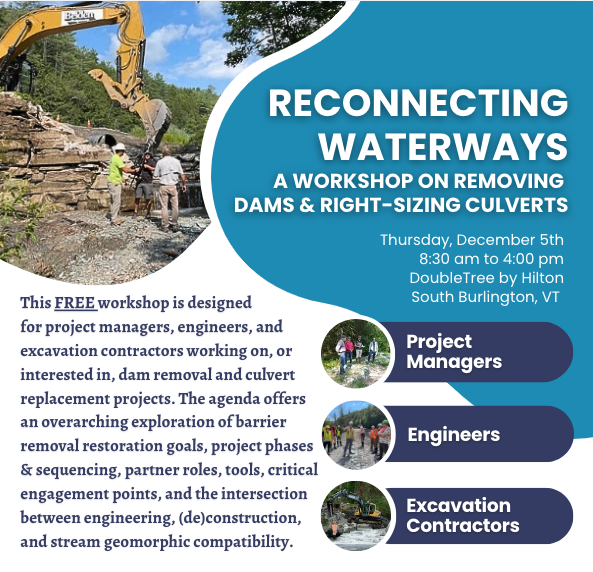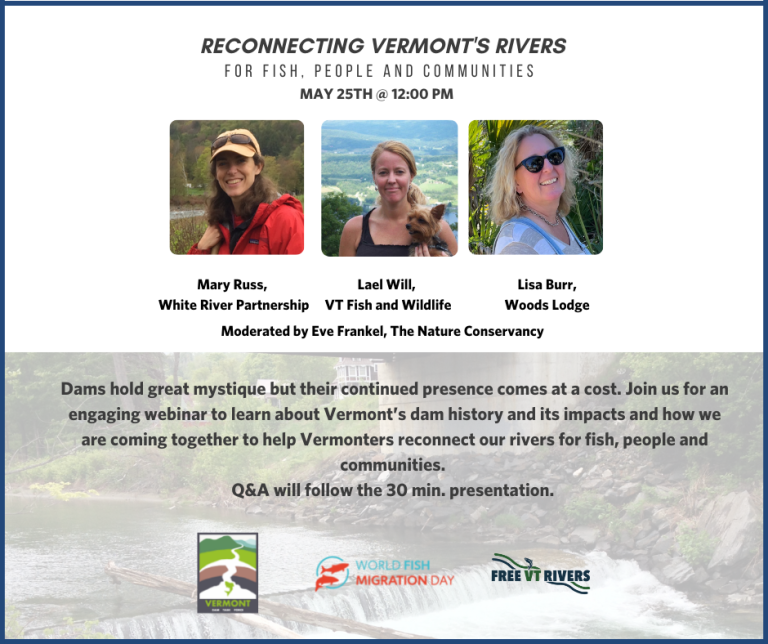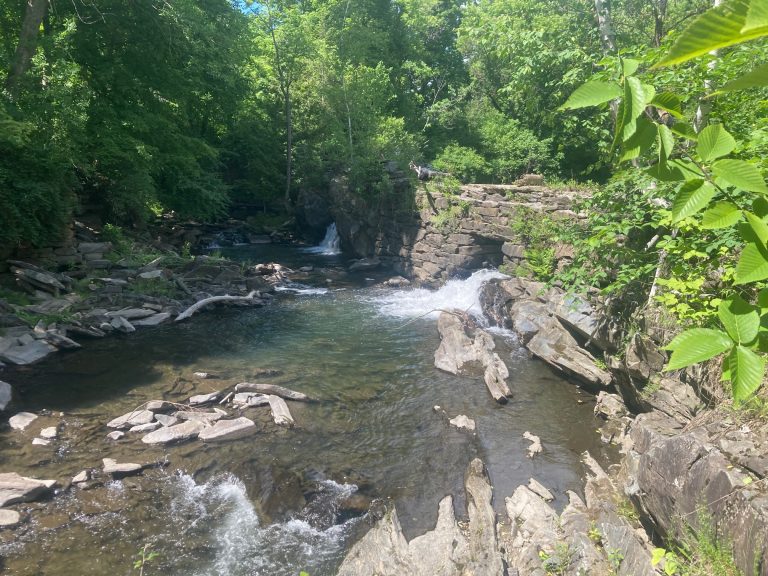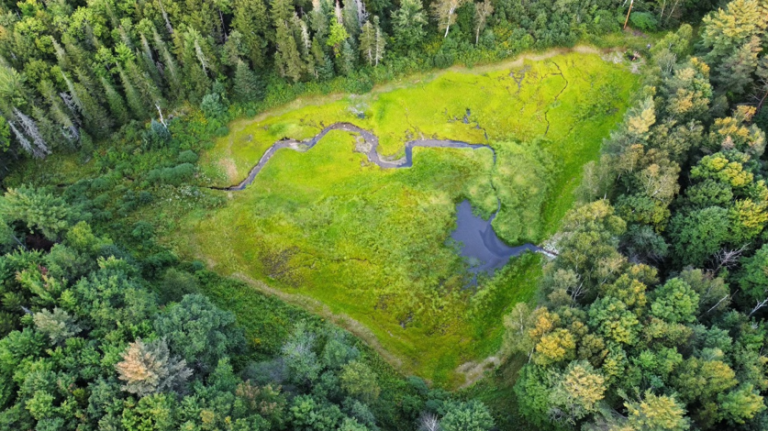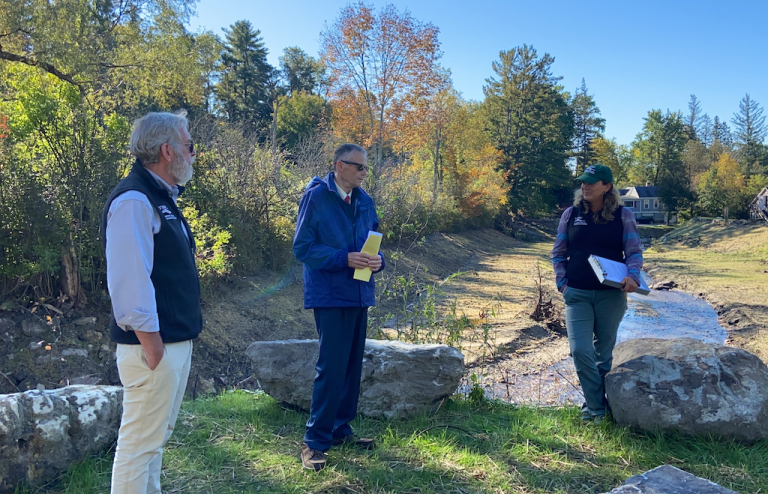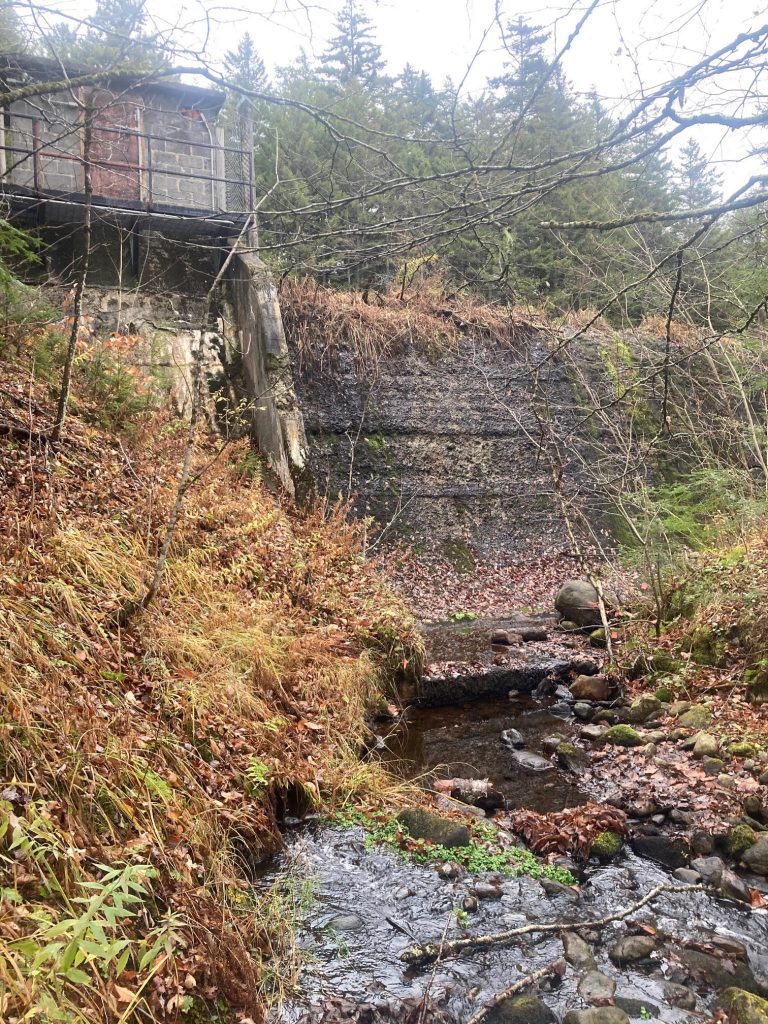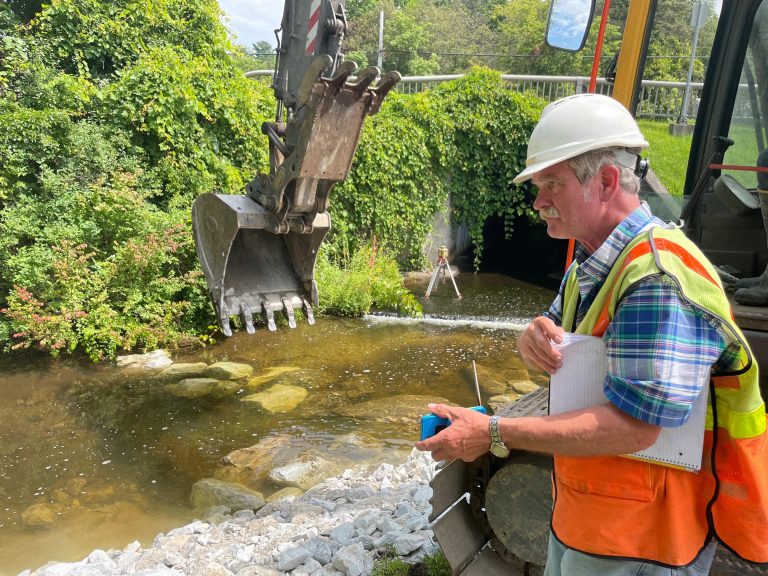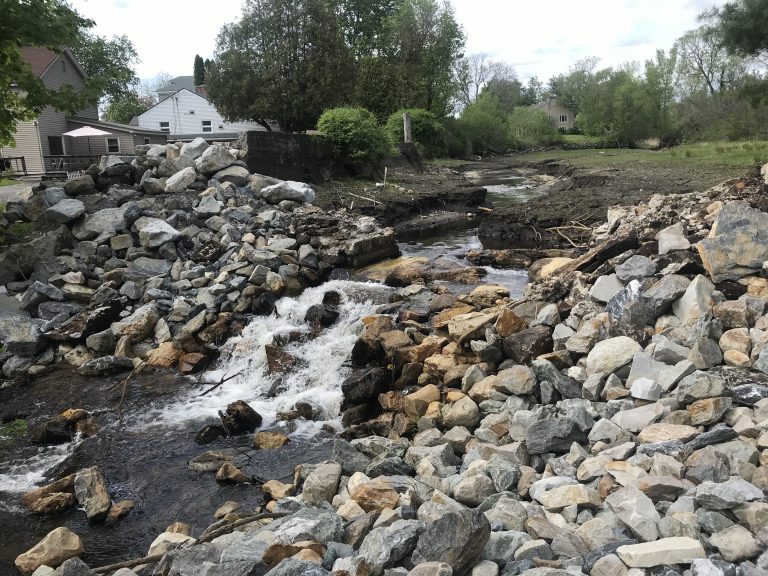VNRC is Hiring an Ecological Restoration Fellow!
Vermont Natural Resources Council (VNRC) is seeking a passionate Ecological Restoration Fellow to support our work around floodplain and wetlands restoration and the implementation of river reconnection projects. The Fellow will provide support on VNRC’s existing dam removal projects, and coordinate with landowners, agencies, scientists, and watershed practitioners to prioritize and help secure funding for new projects. Through planning, problem solving, and partnerships, the Fellow will build capacity for VNRC’s dam removal and clean water programs, and also provide strategic support for its healthy forest and sustainable communities initiatives.
This position requires significant collaborative spirit and professional expertise with ecological restoration, writing, outreach, and environmental science communications. The Fellow will help develop tools and documents for dam removal best practices, contribute to research and monitoring efforts, support the Vermont Dam Task Force, and build visibility through public events and presentations for VNRC projects. Preferred qualifications include: a degree in environmental science, ecology, land use planning or natural resources; two or more years of professional experience in river, wetland or other aquatic ecology and/or hydrology; and demonstrated skills in raising public awareness and building community support for restoration projects. Click here to read the full job description.
The Ecological Restoration Fellow is a full-time, one-year contractual position with the possibility of being extended for the right candidate if resources allow. The position follows a hybrid schedule of field work, office work (in Montpelier) and remote work. In-state travel is expected and will be reimbursed at the IRS rate. Pay is commensurate with experience, with a minimum starting hourly rate of $25/hour. This is a temporary position so benefits are limited.
To apply, please email a resume and letter of interest to aconnizzo@vnrc.org with the subject line “Ecological Restoration Fellow”. Applications will be reviewed on a rolling basis until the position is filled. Please direct any questions to Alex Connizzo, VNRC’s Special Projects Coordinator, at (802) 223-2328 x126 or aconnizzo@vnrc.org.
This position was posted on April 8, 2025. Click here for the most up-to-date information: https://vnrc.org/ecological-restoration-fellow/
Watch: Earth Day Panel Discussion at Orvis
On April 22, 2025, VNRC’s Restoration Ecologist Karina Dailey traveled to Manchester, Vermont for an Earth Day panel discussion hosted by Trout Unlimited at Orvis. Find the full panel discussion video below.
Vermont Department of Environmental Conservation is Hiring!
Two Dam Safety Engineer positions are currently open in the Vermont Department of Environmental Conservation Water Investment Division Dam Safety Program. These positions are being posted at multi-level to widen the swath of potential candidates.
Dam Safety Program Technical Services
Level IV: https://careers.vermont.gov/job-invite/52341/
Level V: https://careers.vermont.gov/job-invite/52347/
Level VI: https://careers.vermont.gov/job-invite/52348/
Dam Safety Program Regulatory and Emergency Action Plan Services
Level IV: https://careers.vermont.gov/job-invite/52349/
Level V: https://careers.vermont.gov/job-invite/52360/
Level VI: https://careers.vermont.gov/job-invite/52361/
Behind Montpelier’s Bailey Dam
Learn about the Bailey (or Shaw’s) dam in Montpelier in this short 4-minute video, then embark on a tour of Montpelier’s riverfront, including all four dams Vermont River Conservancy is working to remove. These projects will mitigate flood impacts, create recreation opportunities, and make the river a better place for humans and wildlife alike.
A Survey of Fish Passage Laws
Here’s a recent presentation on the fish passage laws in Vermont from Nathaniel Launer, the 2024 Mollie Beattie Intern at Vermont Natural Resources Council (VNRC):
Dam Removal Cost Estimator Tool
We’re excited to share the Dam Removal Cost Estimator Tool, created by the Network for Engineering with Nature, ERDC, the University of Georgia, and the United States Geological Survey. Explore the tool below:

Reconnecting Waterways:
A Workshop on Removing Dams & Right-Sizing Culverts
Thursday, December 5th
8:30 am to 4:00 pm
DoubleTree by Hilton
870 Williston Road, South Burlington, VT
Lake Champlain Basin Program (LCBP), New England Interstate Water Pollution (NEIWPCC), Watersheds United Vermont (WUV), and Vermont Natural Resources Council (VNRC), with support from the Connecticut River Conservancy (CRC) and the Vermont Dam Task Force, are proud to offer a full-day workshop designed for project managers, engineers, and excavation contractors currently working on – or interested in working on – dam removal and/or culvert replacement projects. The workshop will offer an overarching exploration of barrier removal restoration goals, project phases, stakeholder roles, important tools, and critical engagement points.
Participants will have the opportunity to focus on one track of presentations through the day – project management, engineering, or excavating contracting- or pick and choose the most applicable sessions to meet their learning goals. The agenda includes built-in time to gather with colleagues across sectors to process the sessions and discuss ways to facilitate good communication and streamline projects.
Karina Dailey Presentation to the Lewis Creek Association Board on Dam Removal
The Lewis Creek Association board invited Karina Dailey, Restoration Ecologist with Vermont Natural Resources Council (VNRC, to present at their February 8, 2024 meeting. Karina shared about the science of dam removal, as well as an overview of dam removals in the watersheds they serve – specifically, the Baldwin Pond Dam.
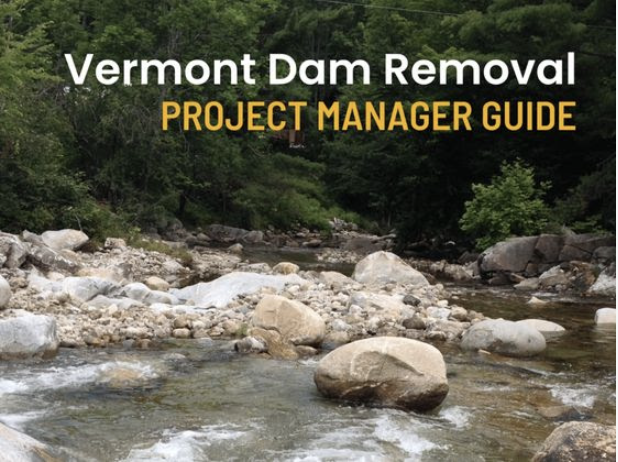
Now Available: Vermont Dam Removal Project Manager Guide
The Vermont Dam Task Force and partners have developed the “Vermont Dam Removal Project Management Guide.” Now available, for free download, this guide is a set of resources for anyone involved in dam removal projects, including project managers, engineers, contractors,
community members, and more. It takes thoughtful planning and engagement with partners to identify opportunities for dam removal and design those projects through to construction leading to healthy rivers and communities. Whether you are working on a large-scale project or a smaller community-based effort, this guide will provide you with the tools you need to successfully manage a dam
removal project in Vermont.
Learn more and download the guide here.
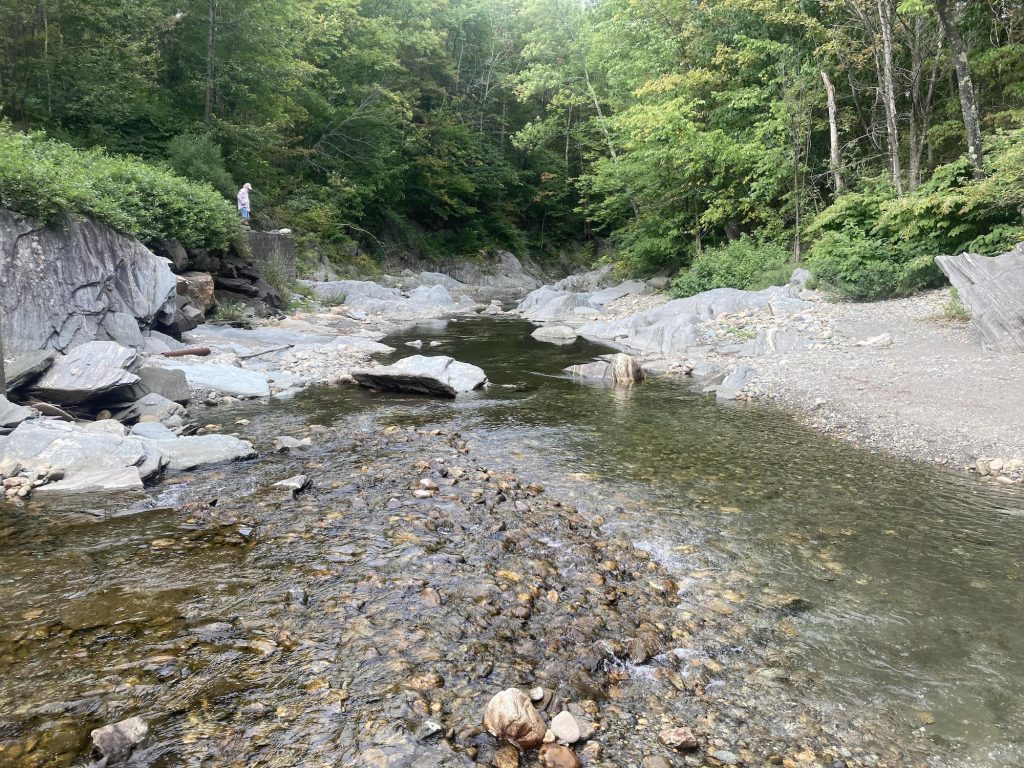
Public Meeting on Moretown No. 8 Hydroelectric Project on Oct. 20th at 1pm, Moretown Memorial Library
The Vermont Department of Environmental Conservation wants to hear your voice regarding the relicensing of the Moretown No. 8 Hydroelectric Project on the Mad River. Please join us on Friday, October 20th at 1pm at Moretown Memorial Library for the public hearing to review the dam project’s application for a Clean Water Act Section 401 Water Quality Certification.VNRC and watershed partners including American Whitewater, Friends of the Mad River, Friends of the Winooski, the MadDog Chapter of Trout Unlimited, Vermont Paddlers Club, Vermont River Conservancy, and Northern Forest Canoe Trail will be attending in support of improved aquatic habitat, flow management, and recreation access. Learn more here.
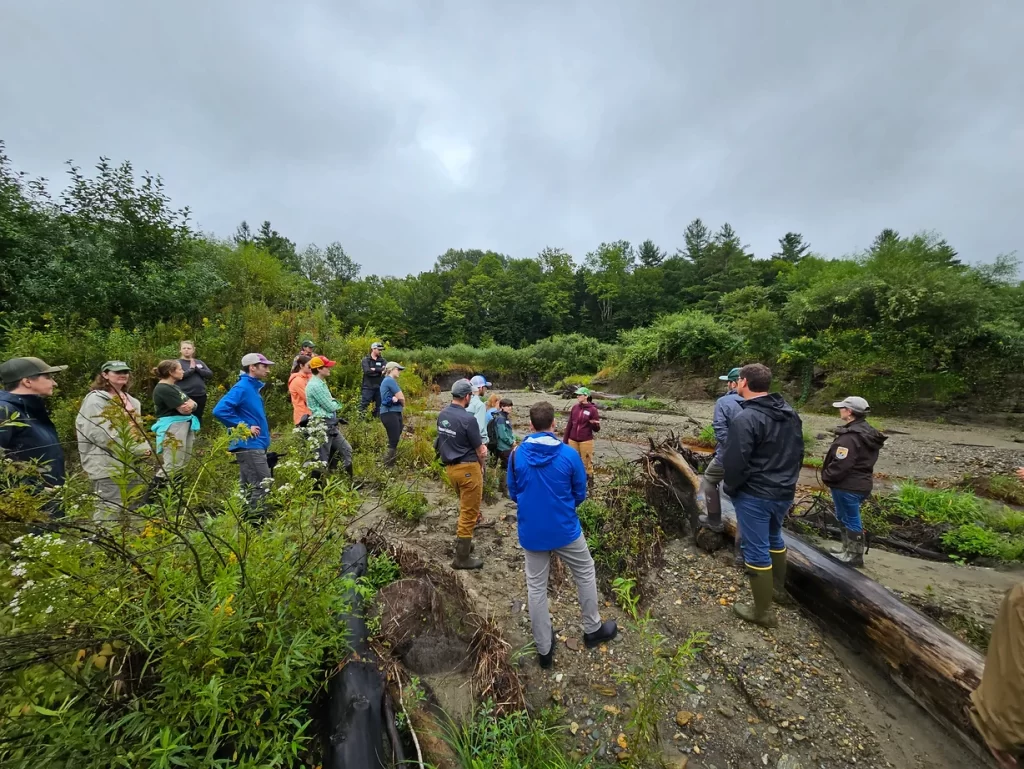
Community explores changing landscape at Bakersfield Dam Removal
On Wednesday, August 30th, 35 dam removal and stream restoration practitioners, as well as members of the public, visited a project site in Bakersfield, VT to learn lessons from the removal of the Johnsons Mill Dam.
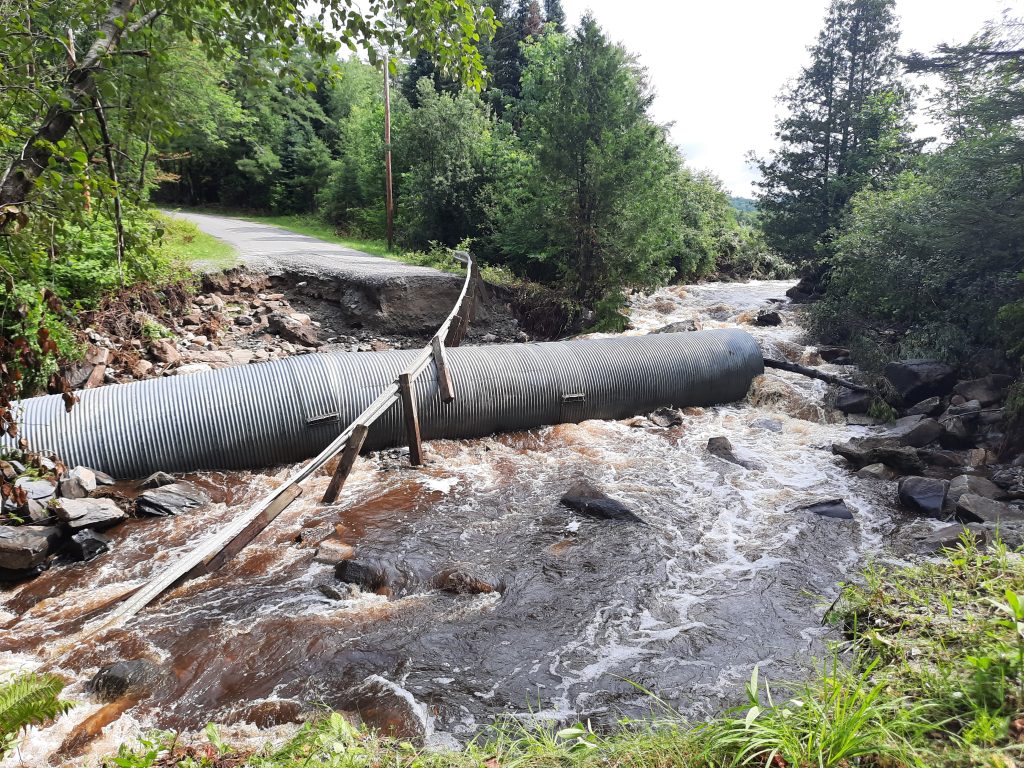
Devastating Flooding Highlights Danger of Dams
As heartbreaking floods have damaged large parts of Vermont, the FreeVermontRivers team has been more aware than ever of the risks dams can pose and the benefits to removing them. We are aware that dams across the state have been threatened or failed causing increased damage and fear. If you own or are part of a community that is endangered by a dam, please reach out with your concerns. Perhaps there is a path to removal we can pursue together. If you need support or are interested in volunteering, please find a list of resources here.
Photo of a washed out road in Marshfield, VT by Mary Perchlik. A beaver dam built on a partially removed mill dam failed, flooding the road downstream.
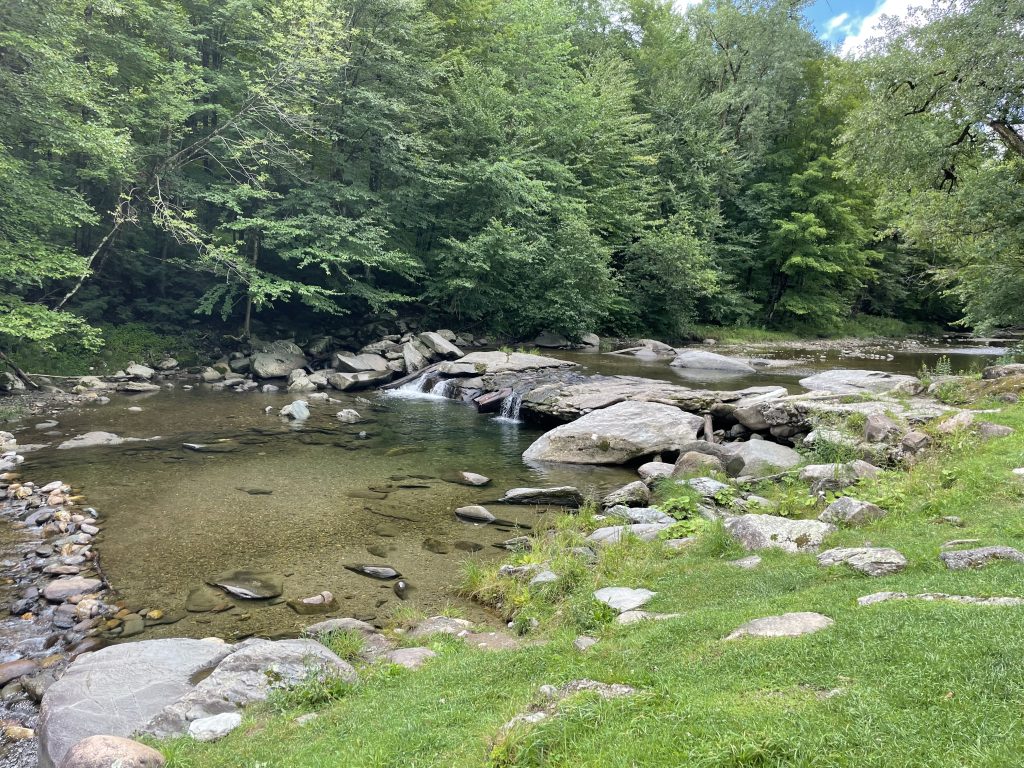
Fitzgerald Environmental Associates LLC Selected to Design Three Dam Removals Along the Brewster River
Three dams along the Brewster River, a tributary to the Lamoille River, have removal designs underway by Fitzgerald Environmental Associates. Removal of the three dams will help improve the water quality, habitat, and recreation in the Brewster and Lamoille Rivers.
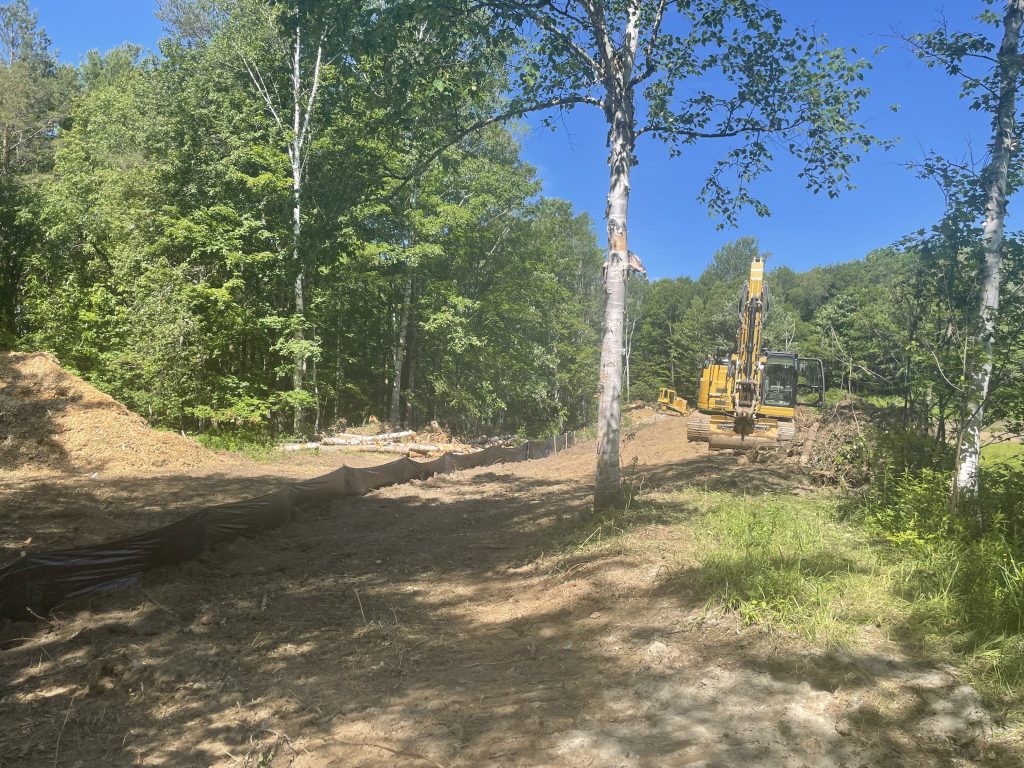
Connolly Pond Dam Removal is Underway in Shrewsbury, VT
Removal began in late June, 2023. The dam is being removed in the interest of public safety to reduce flood risk, and reconnect and restore a headwater tributary to the Mill River, which ultimately flows to the Otter Creek and then Lake Champlain. The dam is reported to have been constructed c. 1965 for fire suppression, and to provide a water source for farm crops and livestock, and as a pond for recreation. The project is designed to reconnect the headwaters to the Mill River and ultimately Lake Champlain. Many co-benefits result from dam removals including restoring natural sediment transport, reduced erosion, restored aquatic organism passage, reconnection with the floodplain to support flood resilience, restored wetlands, stream channel processes, and a restored ecosystem with increased biodiversity.
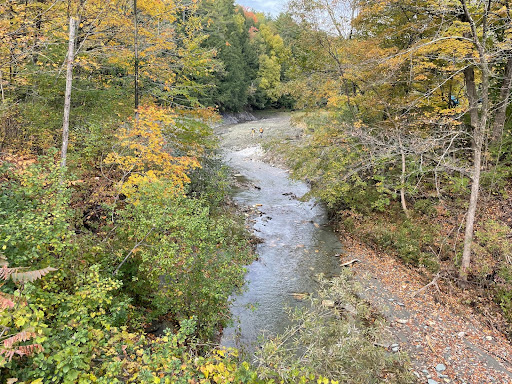
Spring Tree Planting at the Pelletier Dam Removal Site
Since the dam was removed in the fall of 2022, the Pelletier site has been adjusting to its newfound freedom! Tree plantings are a big part of restoring the site post construction, and we need help! VNRC is organizing a tree planting on May 11, 2023 from 10 am to 2 pm at the Pelletier site, and welcomes anyone to come visit and plant trees! The dam is located directly across the street from Green Mountain Soapstone (680 East Hubbardton Rd, Castleton). Please park at this address, as there is limited parking at the Dam site. Please bring your own shovel, gloves, water, and waterproof boots for crossing the stream.
Photo is of Pelletier Dam site after removal. Photo credit: Karina Dailey, Vermont Natural Resources Council
Reach out to Mary Perchlik at mperchlik@vnrc.org to RSVP, or for more information.
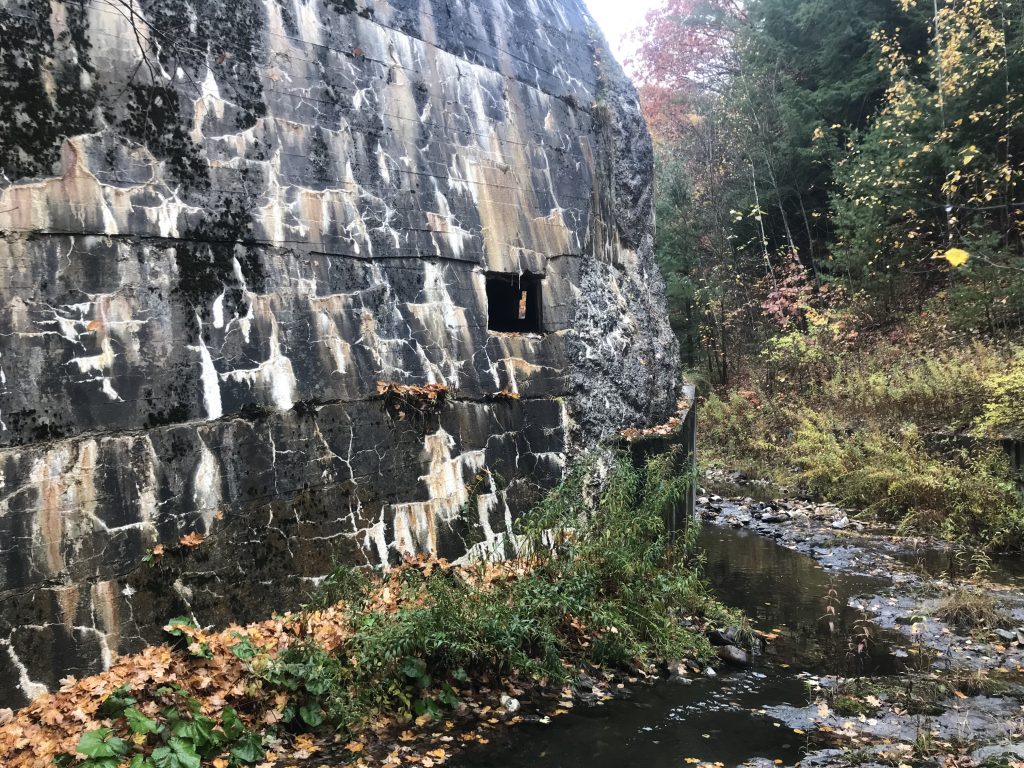
Request for Bids for Youngs Brook Dam Removal
The Town of West Rutland in partnership with VNRC and FEMA are requesting qualified individual or firms to provide permitting support, construction bid documents and engineering oversight for the removal of the Youngs Brook Dam. Bids are due April 7th, 2023. Removing Youngs Brook Dam will reconnect over six miles of stream habitat.
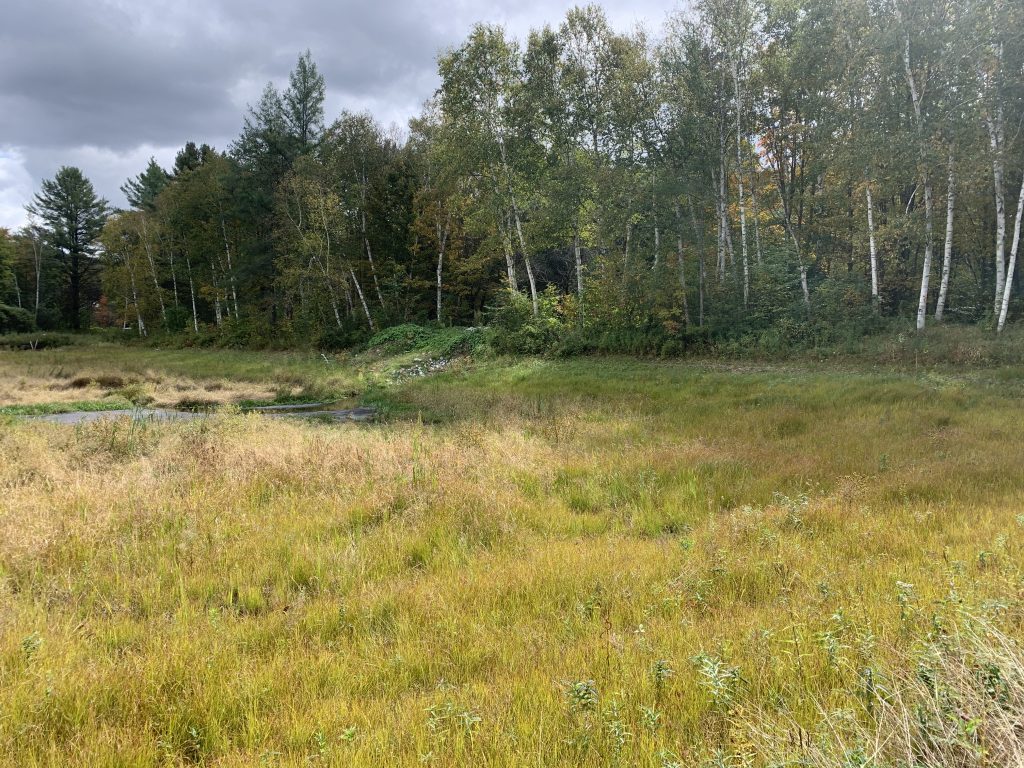
Request for Bids for Connolly Pond Dam Removal
VNRC is currently seeking competitive bids to remove Connolly Pond Dam and restore the stream channel. Bids are due April 20th, 2023. Removal of the dam will begin this summer and involve the removal of the 320 foot long, 11 foot tall dam on an unnamed tributary of the Mill River in Shrewsberry.
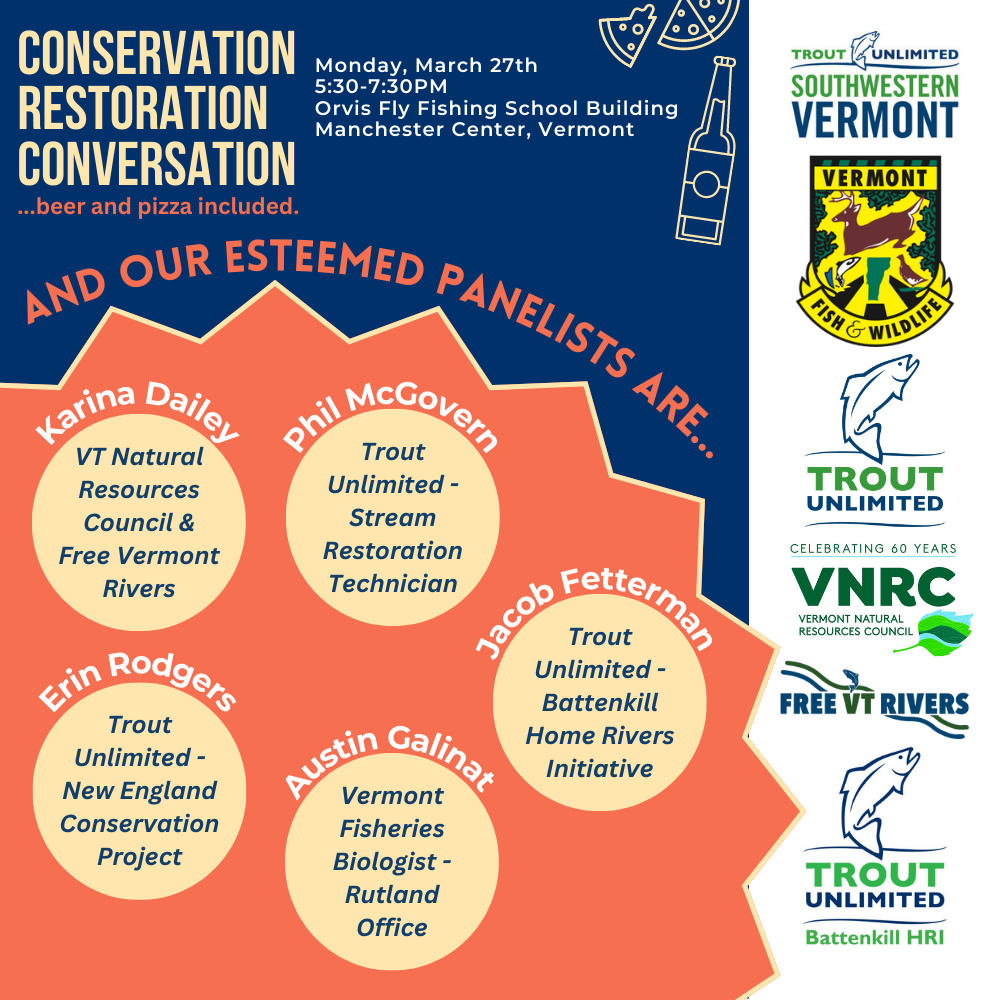
Conservation Restoration Conversation
Join us for an update on the Battenkill Home Rivers Initiative, and a panel discussion on coldwater conservation and restoration.
- State of local waters
- Dams, culverts and the watershed, why we care and what we can do!
- Dam Removal 101 – Info regarding projects that have occurred in our region.
- On the horizon – opportunities and challenges for our local waters
Hear from experts in the field about the work being done in our region to protect our recreational resources and fisheries!
Learn more about what YOU can do to support this important work!
Video highlights Pelletier Tree Planting
VNRC has created a new video highlighting the tree plantings that were completed in October of 2022 at the Pelletier Dam removal site.

Request for Proposals Out for Trout Brook Dam Removal Feasibility Study
The Franklin County Natural Resources Conservation District has released a request for proposals (RFP) for a feasibility study on the removal of Trout Brook Dam on the Trout Brook in Berkshire, Vermont. The study will report options and preliminary costs to remove the dam, and improve fish passage on the Trout Brook.
Photo of Trout Brook Dam by Karina Dailey, Vermont Natural Resources Council
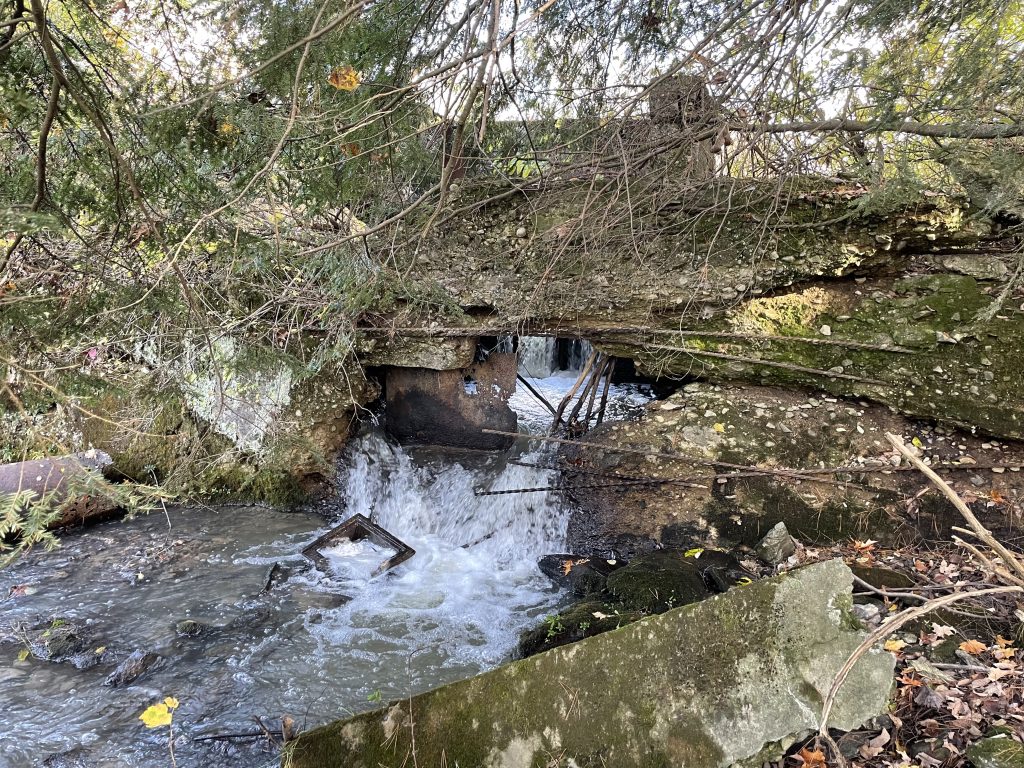
Wainwright Mill Dam Removal Final Design Awarded to SLR
SLR has been selected to complete the final design for removing the Wainwright Mill Dam on the Halnon Brook in Salisbury, Vermont.
Photo of Wainwright Mill Dam by Karina Dailey, Vermont Natural Resources Council
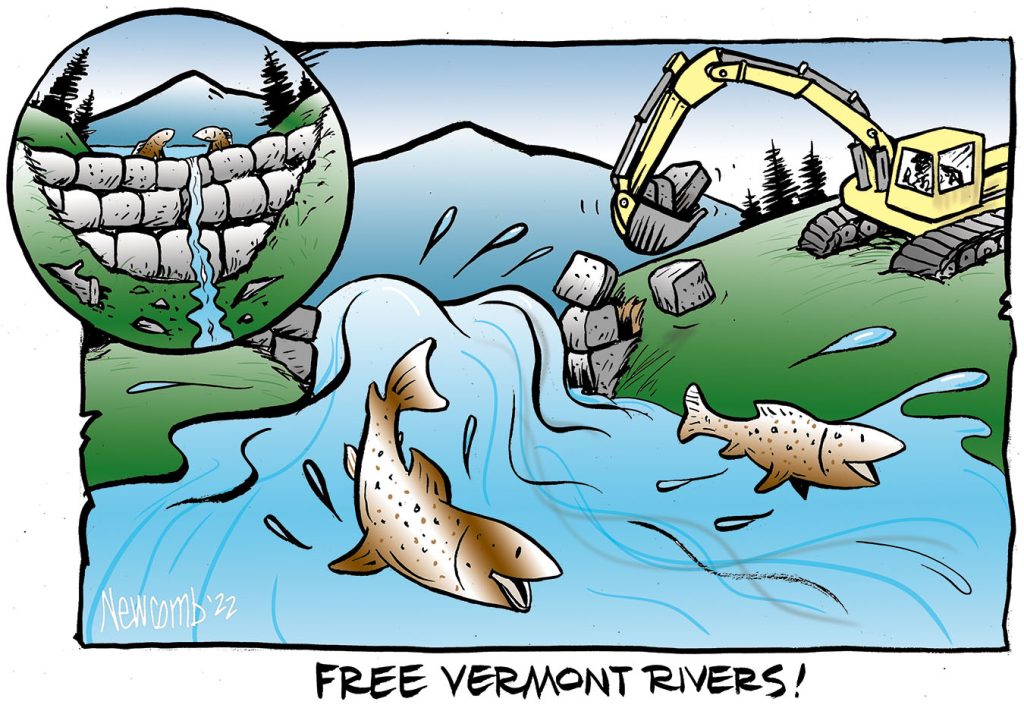
New Tim Newcomb Comic Highlights Dam Removals
Vermont Natural Resources Council partnered with Vermont comic artist Tim Newcomb to create this graphic to spread awareness about the benefits of dam removals. The comic is meant to be used by all!
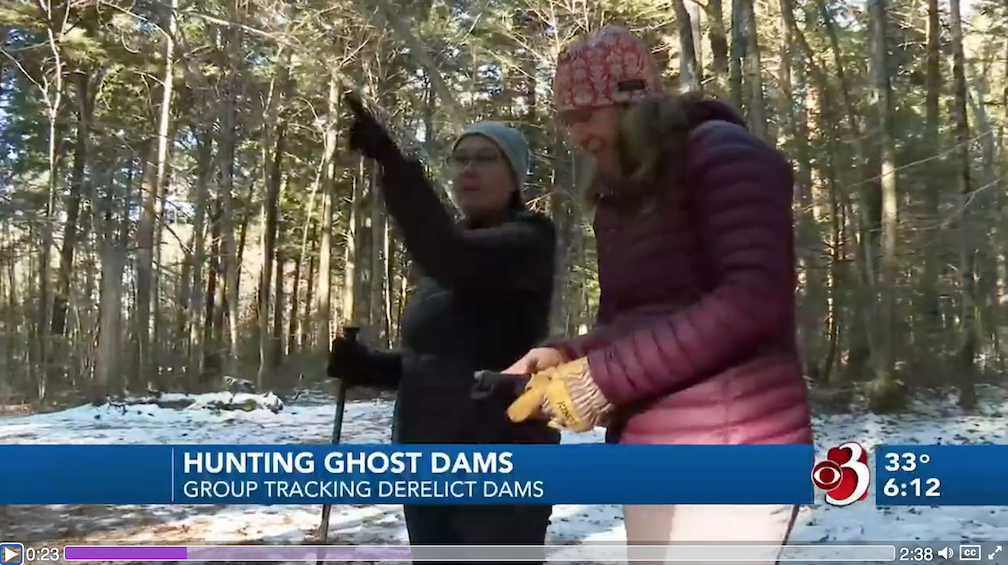
WATCH: Ghost Dams are in the News!
Someone recently called VNRC a team of ghostbusters for dam removal. We’re more than okay with that!
WATCH this segment from WCAX-TV and learn all about a ghost dam in Jericho, one of the winners of our recent “ghost dam hunt”!
https://www.wcax.com/2022/11/22/hunting-vermonts-ghost-dams/
And, read more about ghost dams, and our work to remove derelict dams, HERE.
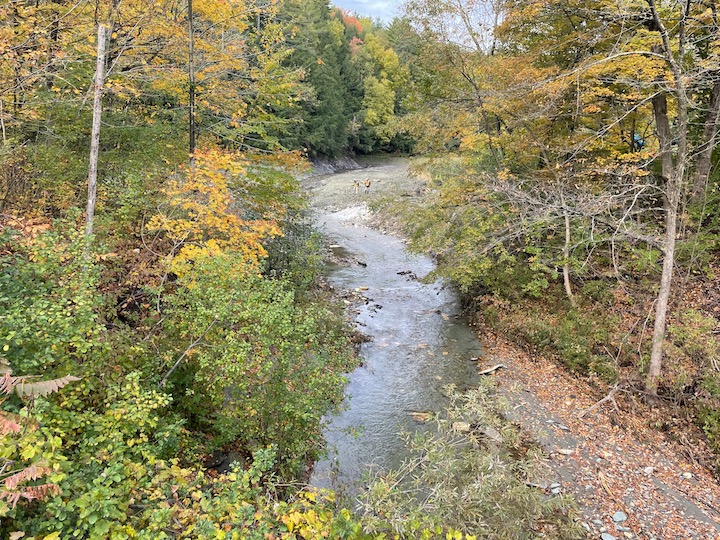
Got Halloween Plans? Come Plant Trees at the Pelletier Dam Site in Castleton!
Now that the dam and sediment from the Pelletier Dam in Castleton, VT have been removed, the stream bank and surrounding floodplain area will be planted with native trees and shrubs. VNRC is organizing a tree planting on October 31, 2022 from 10 am to 2 pm at the Pelletier site, and welcomes anyone to come visit and plant trees! The dam is located directly across the street from Green Mountain Soapstone (680 East Hubbardton Rd, Castleton). Please park at this address, as there is limited parking at the Dam site. Please bring your own shovel, gloves, water, and waterproof boots for crossing the stream.
Photo is of Pelletier Dam site after removal. Photo credit: Karina Dailey, Vermont Natural Resources Council
Reach out to Mary Perchlik at mperchlik@vnrc.org to RSVP, or for more information.
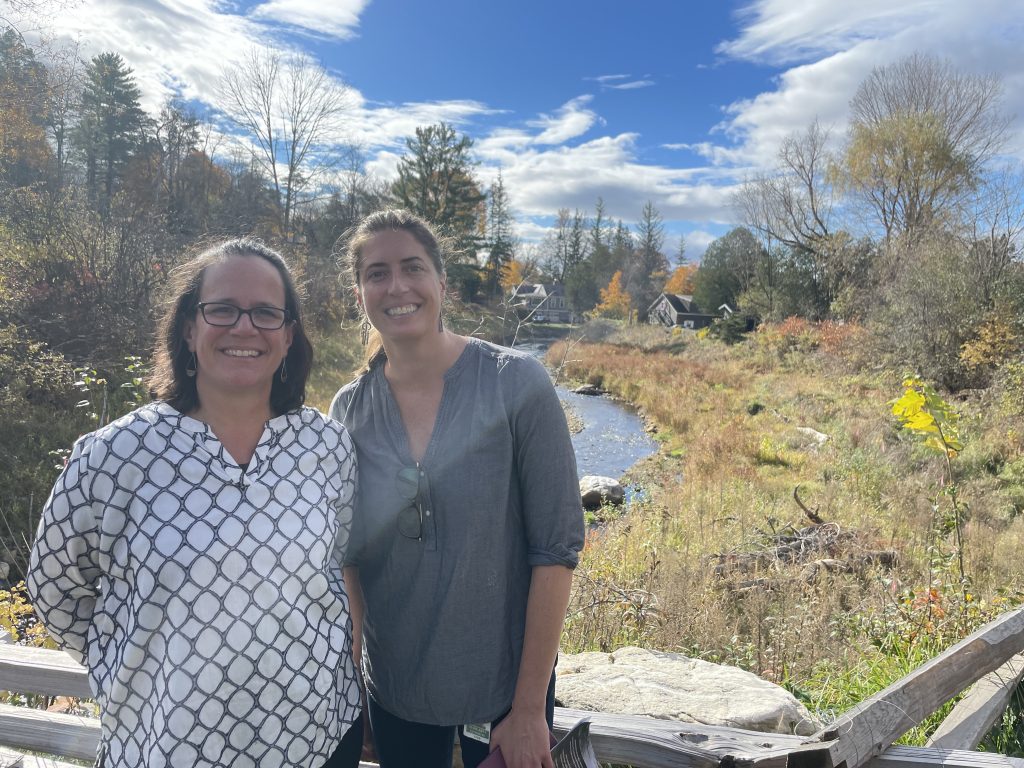
Vermont Agency of Natural Resources Secretary Highlights the Importance of Dam Removals
Photo of Secretary Julie Moore and Deputy Secretary Maggie Gendron at the Dunklee Pond Dam removal site.
The Vermont Agency of Natural Resources highlighted the importance of dam removals by visiting the Dunklee Pond Dam and Pelletier Dam removal sites. Agency of Natural Resources Secretary Julie Moore was joined by river partners to discuss recent dam removal projects in the Rutland area and the importance of dam removals to Vermonters and Visitors.
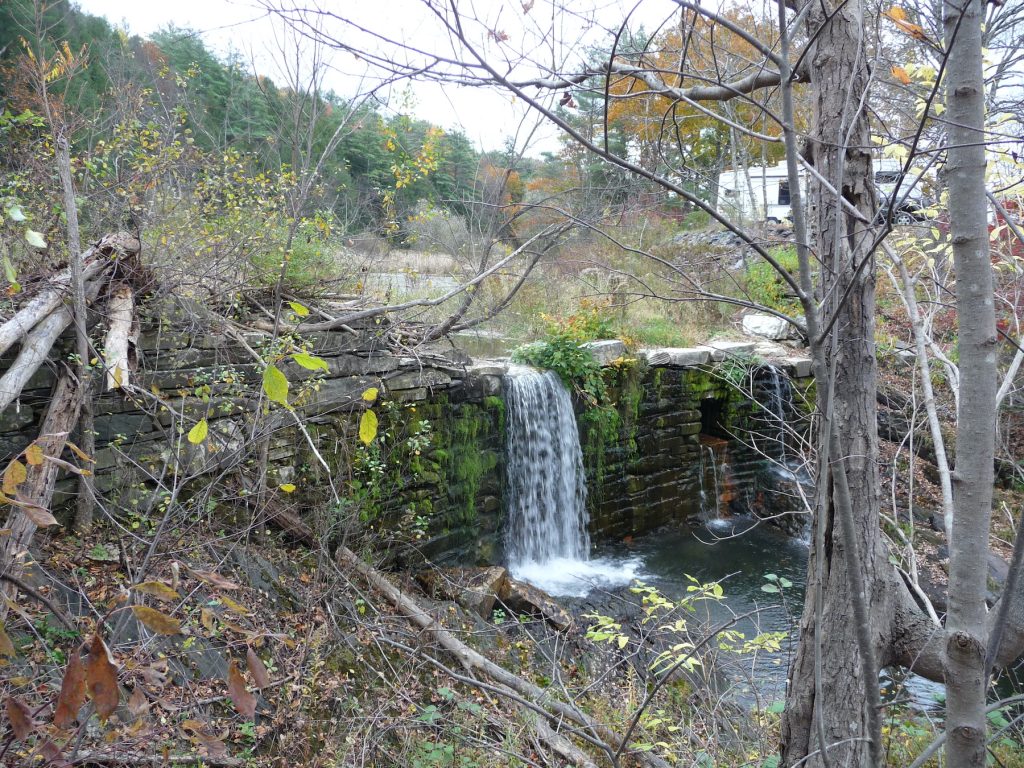
Pelletier Dam Removal Is Completed: Wild Trout and Riparian Habitats Restored in Castleton, VT
Photo of Pelletier Dam before removal. Photo credit: Karina Dailey, Vermont Natural Resources Council
As of October 1st, the health and function of North Breton Brook in Castleton has been remarkably improved through the removal of the Pelletier Dam off East Hubbardton Road. The dam, along with 15,000 cubic yards of sediment, was removed from the stream bed, reconnecting the river to its natural path and flow.
Photo of Pelletier Dam site after removal! Photo credit: Karina Dailey, Vermont Natural Resources Council

The Pelletier Dam was derelict, which means it had not been used for its original purpose as a marble mill in decades. The State of Vermont Fish and Wildlife acquired the dam after the mill closed and recognized the benefits of removing the dam. Dams are a barrier to the passage of the river and aquatic life; they obstruct fish and other animals from traveling the river, block nutrients from feeding plants downstream, warm the temperature of the stream by creating a pond behind the dam which reduces cold water habitat for fish, elevate the water which can increase flood levels, and become a public safety and infrastructure concern for public access at the river and potential damage to homes, roads, and utilities if the dam fails on its own.
The removal of the dam has opened approximately 37 miles of wild trout habitat. For the first time in over 200 years, trout will be able to move freely up and downstream, reconnecting populations and expanding habitat. The removal of the dam also restores about 3000 feet of riparian floodplain and habitat that were previously buried under the pond. This riparian area will act as a sponge, soaking up rain during flood events and improving flood resiliency.
Now that the dam and sediment have been removed, the stream bank and surrounding floodplain area will be planted with native trees and shrubs. To RSVP for the tree planting event on Oct. 31 (organized by VNRC) and to see photos of the dam before, during, and after removal, please see this link.
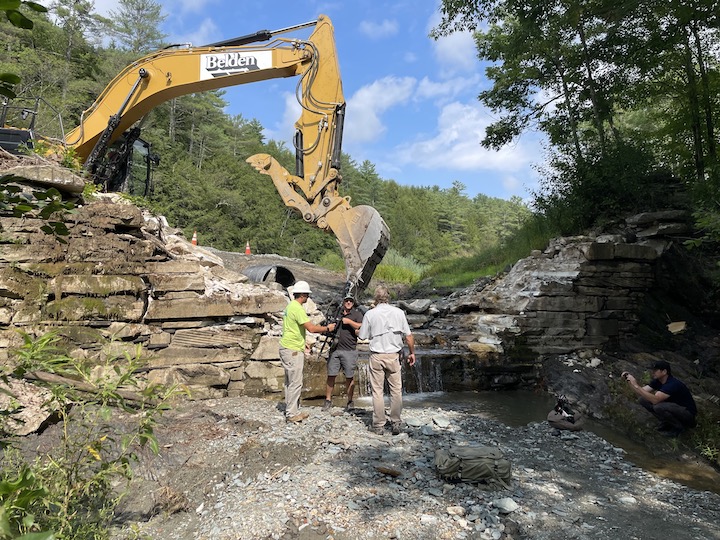
Photo of Pelletier Dam during removal. Photo credit: Karina Dailey, Vermont Natural Resources Council
Funding for design, permitting, and construction has been provided by NEIWPCC in partnership with the Lake Champlain Basin Program, US Fish and Wildlife Service through the National Fish Passage Program, VNRC, The Nature Conservancy, Vermont Fish and Wildlife Department, the Vermont Department of Environmental Conservation and the Poultney Mettowee Natural Resources Conservation District.
LISTEN: VNRC’s Karina Dailey Discusses Pelletier Dam Removal on Restoration Roundup Podcast
Dam removal is an important way to restore natural flows, habitat, and surrounding vegetation to rivers. Many dams in Vermont are long-standing, with a history of being used for industrial work or creation of recreational spaces such as fishing ponds or swimming holes, but projects like this allow for the passage of aquatic life and the restoration of rivers and their associated floodplains. The Pelletier Dam project has received its funding and permits, begun and nearly finished construction (or de-construction!), and is moving on to the revegetation and monitoring stage.
In this podcast, you can hear Karina Dailey, VNRC’s Restoration Ecologist, along with other guests Shawn Good (Vermont Fish & Wildlife), and Gabe Bolin (Stone Environmental), discuss the process and future plans for this site, learn more about the history of dams, the general goals and tools of dam removal and restoration, how native wildlife interacts with dams (both man-made and beaver-made), and how launching a massive removal project can face challenges but ultimately come through with exciting results.
LISTEN HERE on the Restoration Roundup podcast
WATCH: Pelletier Dam Removal Footage
Filmmakers taking footage of the Pelletier Dam Removal last week in Castleton Vermont. Let the rivers flow!
Another View of Curtis Pond
The following is a letter to the editor in response to the piece “Maple Corner Gives a Dam,” published on August 3 in Seven Days:
[“Maple Corner Gives a Dam,” August 3] fails to map the watershed connection: Pekin Brook and the wetlands that support Curtis Pond are headwaters to the Kingsbury Branch, which flows to the Winooski River and, ultimately, Lake Champlain. Once, this river flowed freely, moving sediment, nutrients, fish and other organisms downstream. Then, in 1900, Curtis Pond Dam was built to create a millpond.
This man-made barrier caused the water to stop moving, resulting in warmer water temperature, less dissolved oxygen and a sediment-starved downstream. The trout were replaced by sunfish, the biodiversity dropped, nutrients were trapped and the emergent wetland vegetation suffocated.
Reconnecting rivers is a nature-based solution to climate change, and it’s no secret that Lake Champlain is in trouble. Local watershed associations and conservation districts, regional planners, and state and federal partners are working hard with communities to weigh the benefits and impacts and prioritize projects that achieve the most water quality, habitat and public safety improvements while at the same time supporting improved public access for recreation, including fishing, swimming and boating. Vermont’s future depends on clean water, and removal of derelict dams is part of the clean water puzzle.
Curtis Pond is obviously an important resource to the residents of Maple Corner, and the Vermont Natural Resources Council supports their efforts to maintain it. But it is equally important to understand the trade-offs these decisions involve. We must take every advantage to remove derelict dams that fragment habitat, degrade water quality and pose a threat to downstream properties.
Karina Dailey
JERICHO
Dailey is a restoration ecologist with the Vermont Natural Resources Council.
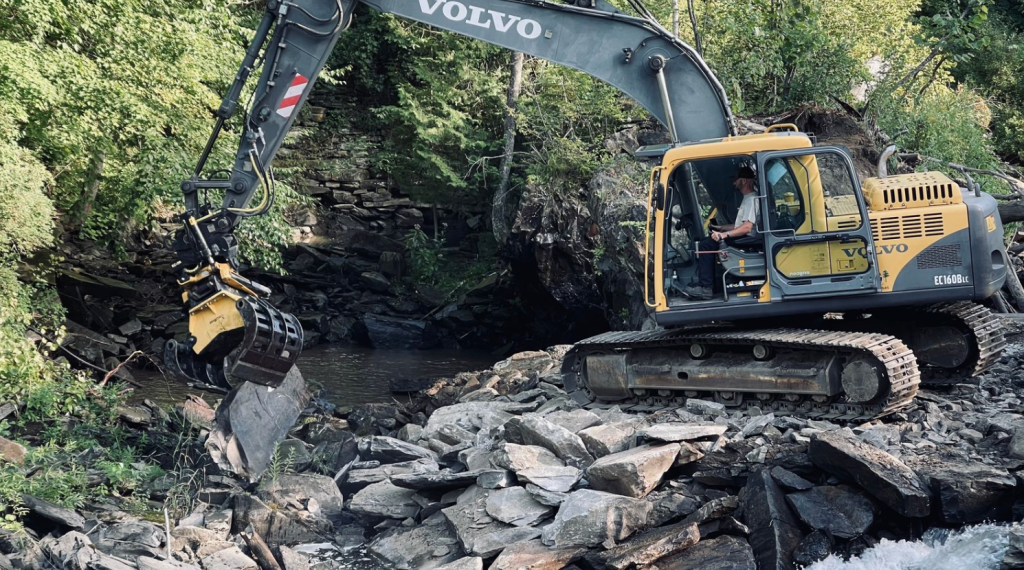
Crooked Creek Dam Removal in Colchester, VT is Complete!
Crooked Creek Dam Removal in Colchester, VT is Complete! The work on this dam removal was led by Allaire Diamond from Vermont Land Trust (VLT).
Photo credit: Nick Clark
WATCH: Montague Dam in Post Mills, VT is complete!
Ron Rhodes and CT River Conservancy were the lead on this project.
WUV New Funding Opportunity
Applications due September 8, 2022. We are pleased to release Watersheds United Vermont’s (WUV’s) new Department of Environmental Conservation Dam Removal Design and Implementation Block Grant (Dam Removal DIBG). WUV has approximately $500,000 to subgrant to eligible entities for dam removal projects that reduce sediment and nutrient pollution, including phosphorus, from runoff and soil erosion that discharge into the State’s rivers, streams, lakes, ponds, and wetlands. WUV seeks proposals for the preliminary design, final design, and implementation of dam removal projects in Vermont. Funding is provided by the Vermont Department of Environmental Conservation’s (VT DEC) Clean Water Initiative Program (CWIP) and is administered by WUV. Projects must be completed by 2024. No leverage/match is required under this program. Voluntary leverage/match is appreciated, particularly for larger implementation projects given the limited availability of funds. Please note that this funding can’t be used as match/leverage for other funding sources. All materials including Grant Guidelines, Grant Application, mandatory Dam Removal Project Readiness and Eligibility Form, and CWIP Funding Policy are now posted on WUV’s Block Grant website. Please reach out to Christian Pelletier, WUV’s Grant Administrator, and Lyn Munno, WUV’s Director, with any questions on this grant.
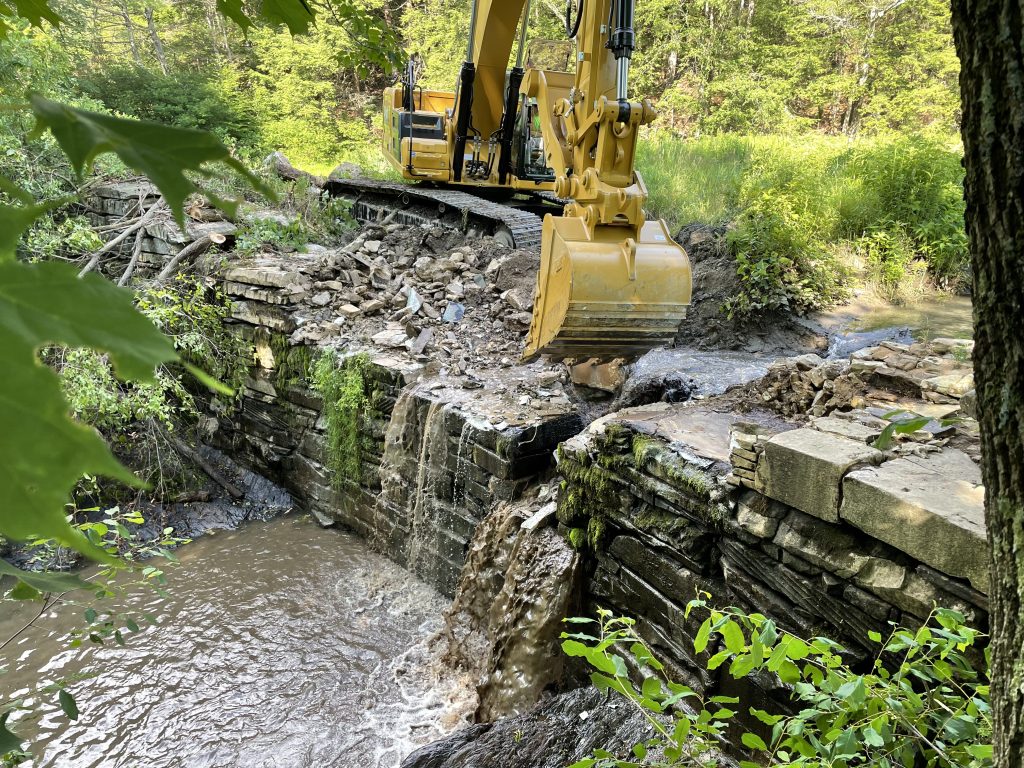
Removal Work Has Started at Pelletier Dam in Castleton, VT
July 11, 2022
Photos courtesy of Gabe Bolin, Stone Environmental
The removal of the Pelletier Dam in Castleton has begun. This derelict stone dam, located on North Breton Brook off of East Hubbardton Road and approximately 0.85 river miles upstream from the confluence with the Castleton River, was originally built around 1792 to power an industrial marble mill (the Sherman Marble Mill complex). In addition to water power, the dam impoundment was also used for commercial ice harvesting. After the closing of the Marble Mill in this location, the dam was acquired by the State of Vermont Fish and Wildlife Department who recognize that the ecological benefits of dam removal far outweigh the barrier that blocks trout species from moving up and down North Breton Brook. “For over 200 years the dam has caused a significant impediment to stream flow, sediment transport, water quality, public safety and fish passage along North Breton Brook and the Castleton River. The removal of this dam will reconnect approximately 37 miles of wild trout habitat and restore approximately 3000 feet of riparian floodplain and stream habitat,” said Karina Dailey, Restoration Ecologist of Vermont Natural Resources Council.
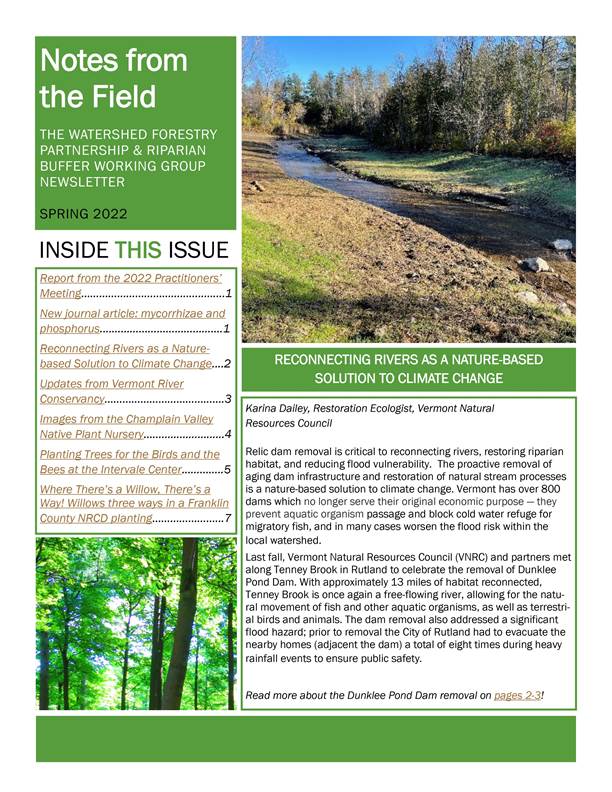
The spring 2022 issue of the Watershed Forestry Partnership newsletter is out!
This issue includes stories about removing the Dunklee Pond Dam; restoration work to benefit birds and bees; using willows multiple ways in restoration projects; and more! Thank you to those of you who submitted stories and updates for this issue. The first page of the newsletter is below, and the complete issue is attached and available online here.
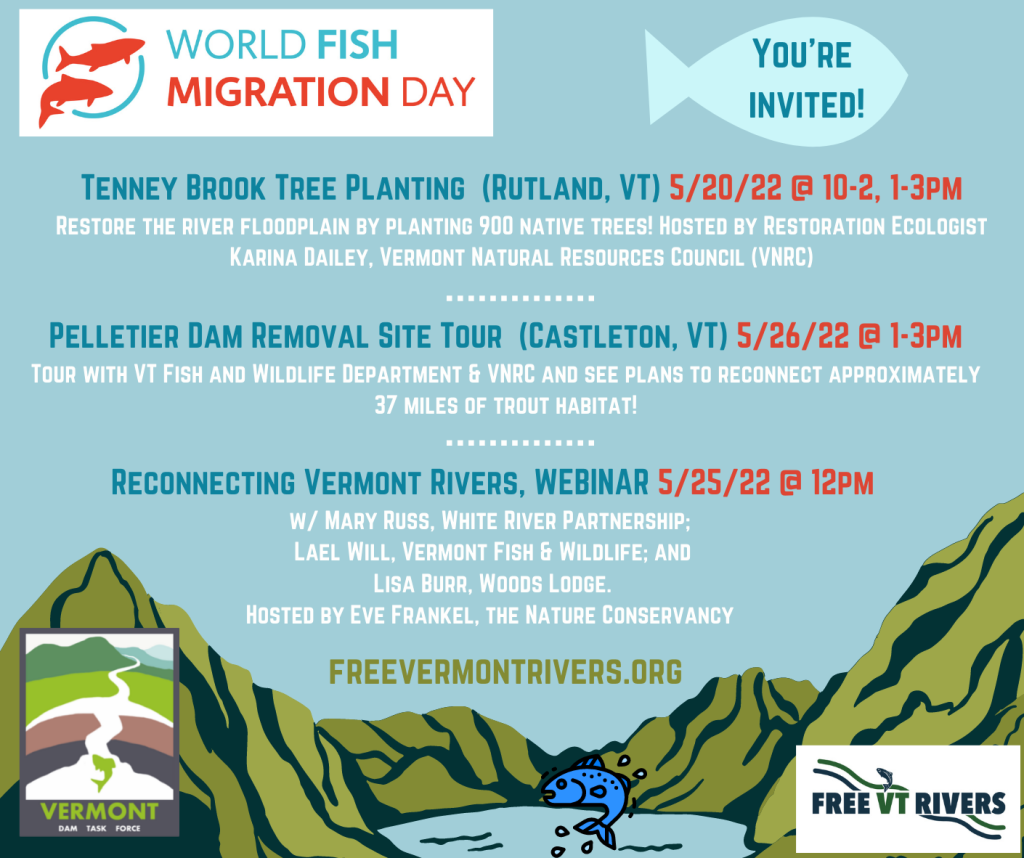

Tenney Brook Tree Planting in Rutland, VT
Friday, May 20 @ 10-12 & 1-3pm
Come Restore a River Floodplain by Planting 900 Native Trees!
Volunteers needed! Join us to celebrate the removal of Dunklee Dam and restore the river floodplain with native trees! Tree planting will be on-going so just stop by for an hour or plant all day!
Hosted by Restoration Ecologist Karina Daily, Vermont Natural Resources Council (VNRC)
Location: Dunklee Pond Dam, Rotary Park, 175 N. Main Street in Rutland, VT
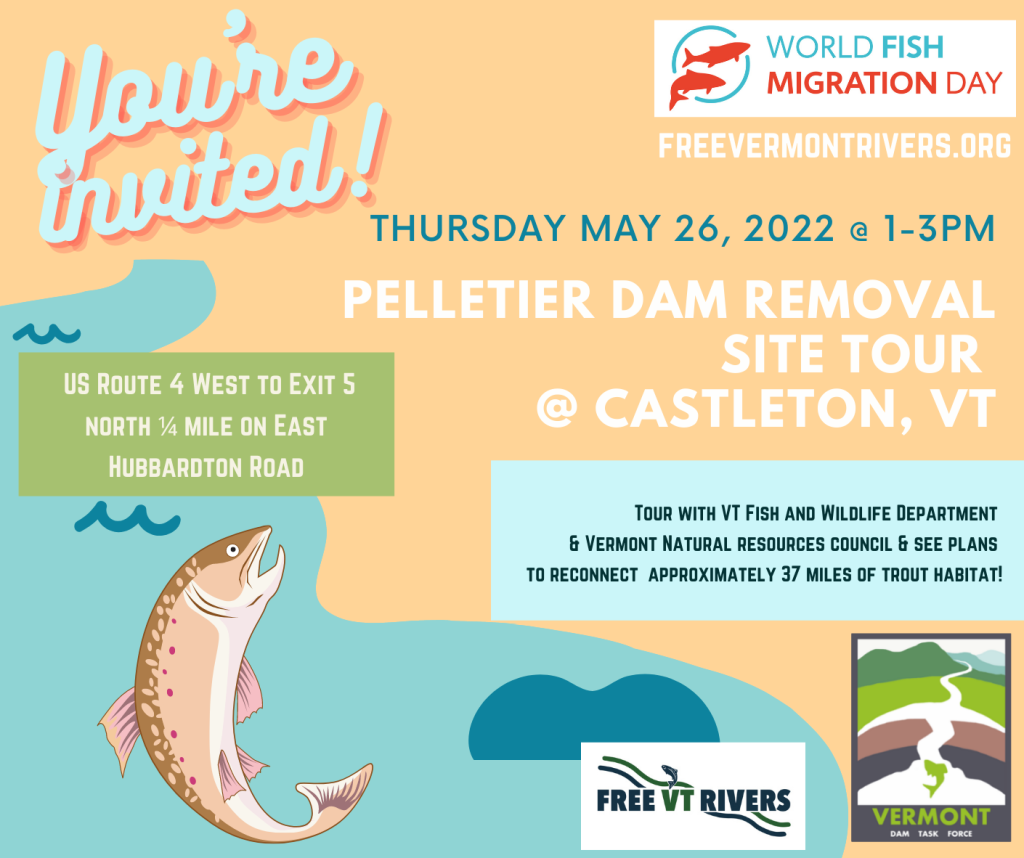
Pelletier Dam Removal Site Tour in Castleton, VT
Thursday, May 26 @ 1-3pm
Removal of this dam in Castleton is planned this summer and will reconnect approximately 37 miles of trout habitat. Tour with VT Fish and Wildlife Department & Vermont Natural Resources Council and see plans to reconnect approximately 37 miles of trout habitat.


